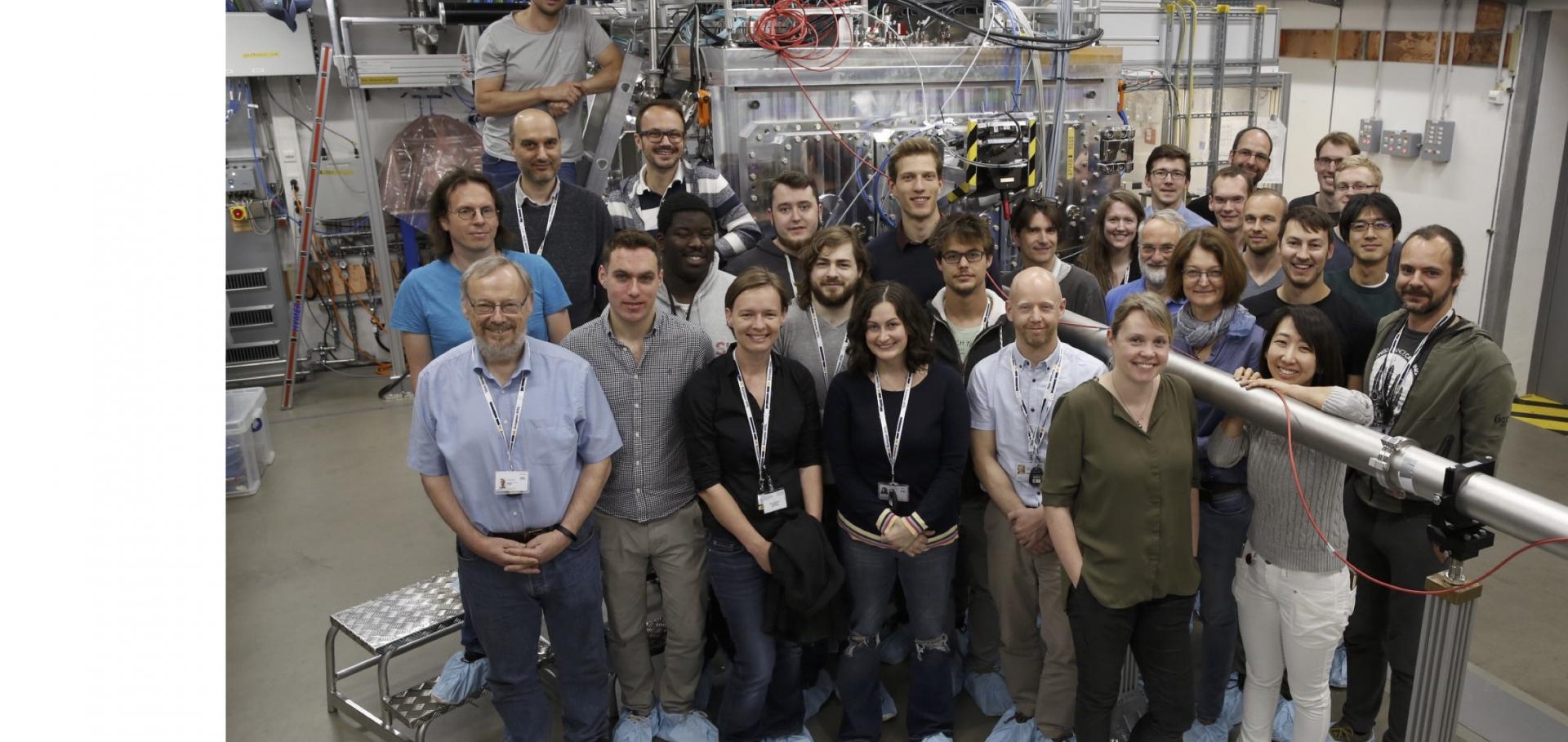Picosecond KrF laser interaction with solid targets
undefined (1988) 136
Abstract:
A high-power KrF system has been used to heat solid targets with laser energies of up to 1 J in 3 ps. Single-shot irradiances of up to 1017 W-cm-2 were achieved at the target surface. A number of diagnostics were used to investigate the plasmas produced. When an ASE background containing about 20% of the short-pulse energy in a 10-ns interval was present, the X-ray spectra indicated an electron temperature of about 400 eV and a density of a few times 1022 cm-2. When the prepulse level was kept below 10-3 of the main pulse, measurements indicated plasmas with temperatures of 400 eV at close to solid density. The production of hot electrons was investigated using titanium targets overcoated with CH, and observing the Ti Kα emission. These measurements also confirmed the low prepulse level, since Kα emission was weak when only 0.5 μm of plastic overcoat was used. The experimental results were simulated with a 1-D hydrocode.Short Pulse X-Ray Diffraction Studies Of Shocked And Annealed Crystals Using The Janus Research Laser
Proceedings of SPIE--the International Society for Optical Engineering SPIE, the international society for optics and photonics 0831 (1988) 243-250
TRANSIENT COMPRESSION PRODUCED IN A CRYSTAL BY LASER IRRADIATION.
undefined (1987) 116-117
Abstract:
Multikilobar transient strains were produced in single-crystal silicon by laser irradiation. Variations of the lattice spacing with time and in depth were observed by pulsed X-ray diffraction. Targets were (111) silicon wafers, overcoated with 1000-angstrom aluminum to provide a short laser absorption depth, and further overcoated with a 25- mu m plastic layer. The temporal development of pressure pulse was observed by measuring the change in interplanar spacing of the (111) silicon planes, using the technique of pulsed X-ray Bragg diffraction. Peak lattice compressions (strains) were directly measured and lattice stress inferred as a function of irradiance and time. The compression was followed from its initial rise on through its crest and subsequent fall to values near, but above, solid density. Linear compressions of up to 4% were measured. Crystallinity was preserved throughout this process.POLYMER SHELL IMPLOSIONS.
(1987) 52
Abstract:
The authors present a detailed investigation of ablatively driven gas-filled polymer shell targets irradiated by the 351-nm 2-kJ 4-TW Omega 24-beam laser system. The implosion of these targets was diagnosed with an extensive array of plasma, X-ray, and nuclear diagnostics. Detailed characterization of the multibeam laser output provided an estimate of the illumination nonuniformities imposed on target. Targets were fabricated from polystyrene or polyvinyl alcohol shells of 200-400- mu m diameter and 5-10- mu m wall thicknesses. Additional polymer layers and ultrathin metallic layers were added to reduce the initial aspect ratio and provide shine-through inhibition and weak X-ray signatures of ablation front penetration, respectively. A detailed comparison of the symmetry and performance of these target implosions has been made with the predictions of the one-dimensional (1-D) and 2-D hydrodynamic codes LILAC and ORCHID, respectively.Shock launching in silicon studied with use of pulsed x-ray diffraction
Physical Review B 35 (1987) 17


